#white-rumped sandpiper
Text
White-rumped Sandpipers in Provincetown 04/05/24
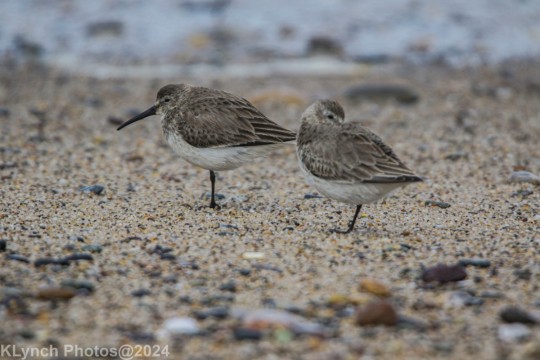
View On WordPress
0 notes
Text
huge respect to @myxinidaes for reblogging that post with 100 birds
#ok im gonna try to list 100 birds. house sparrow song sparrow fox sparrow white-throated sparrow dark-eyed junco#robin. ovenbird. hermit thrush. carolina wren. cardinal#carolina chickadee. house finch. purple finch. goldfinch. white-breasted nuthatch#red-breasted nuthatch. hooded merganser. american coot. wood duck. mallard duck#surf scoter. ruddy duck. black duck. northern shoveler. common loon#crow. fish crow. raven. turkey vulture. bald eagle#feral pigeon. mourning dove. turkey. quail. AMERICAN WOODCOCK#solitary sandpiper. herring gull. great black-backed gull. piping plover. killdeer#yellow-rumped warbler. pine warbler. palm warbler. black and white warbler. i cant think of a fifth warbler. red tailed hawk#cooper's hawk. osprey. barn swallow. tree swallow. blue jay#peacock. egyptian goose. peregrine falcon. merlin. canadian goose#green heron. starting to struggle here. flamingo. skua. albatross. great blue heron#barn owl - snowy owl - great horned owl - barred owl - WHAT was that little owl in central park called - uhhh mandarin duck#chicken. california condor. rose finch (there are many but i dont remember any of the weirder species). adelie penguin. emperor penguin#northern mockingbird.. starling.. grackle.. african gray parrot.. monk parakeet#stellar's jay ... baltimore oriole.. argh what's the other oriole we get. DOWNY WOODPECKER.. hairy woodpecker... pileated woodpecker#red-headed woodpecker. red-bellied woodpecker. ruby-throated hummingbird. scarlet macaw. whooping crane#whippoorwill. snowy egret. great egret. european robin. bird of paradise#there's a warbler that's just 'yellow' right? yellow warbler? cormorant...#struggling with some where i cant remember the exact name like was it a 'double crested' cormorant or something else.#zebra finch .. blue-footed booby... pelican....#australian magpie. The Other Magpie. ibis (nonspecific). potoo. EASTERN BLUEBIRDDDDDD !!!#ceruleanrambling#now i can go read yours
17 notes
·
View notes
Text
Sleeping birds.

These little sleeping birds are dunlins (Calidris alpina). Notice how all of the birds on the outer fringes on the group have their beak tucked under the wing facing away from center. I read about this behavior with another bird species. It's a defensive measure. Many bird species can keep part of their brain awake and keep on
"Shorebird hybrids are very rare, but careful observation by birders have turned up hybrids between Dunlin and at least two other arctic-nesting species: White-rumped Sandpiper and Purple Sandpiper." - allaboutbirds.org
#photo#photography#photographer#photographylovers#bird#birdwatching#birdphotography#dunlin#birds#birdsphotography#birds of north america#birdlovers#birds nature#birbs#birding#bird watching#bird photography#birdingphotography
41 notes
·
View notes
Text
I guess it's time I share my list of birds from this past Jewish year (I've been keeping two Big Year lists, Jewish year and secular year). All are from the US, except the last few which are indicated.
1. Ruby-crowned kinglet
2. American Robin
* Leucistic American Robin
3. Song sparrow
4. Rock pigeon
* Melanistic rock pigeon
5. Chipping sparrow
6. Hairy woodpecker
7. Mourning dove
8. Northern flicker
9. Eastern towhee
10. White crowned sparrow
11. White-throated sparrow
12 Savannah sparrow
13. House sparrow
14. European starling
15. American Crow
16. Common Raven
17. Gray catbird
18. Northern mockingbird
19. Canada Goose
20. Spotted Sandpiper
21. American herring gull
22. Marsh wren
23. Limpkin
24. Great white heron
25. Cattle egret
26. Anhinga
27. Snowy egret
28. Great blue heron
29. Black-crowned night heron
30. Wood stork
31. Common gallinule
32. Blue-gray gnatcatcher
33. Turkey vulture
34. Black vulture
35. Yellow rumped warbler
36. Tufted titmouse
37. Little blue heron
38. White ibis
39. Cooper's hawk
40. Cardinal
41. Green heron
42. Carolina wren
43. Palm warbler
44. Pine warbler
45. Sandhill crane
46. Carolina chickadee
47. Bluejay
48. Osprey
49. Chimney swift
50. Red-tailed hawk
51. Prairie warbler
52. American kestrel
53. Glossy ibis
54. Pied-billed grebe
55. Double-crested cormorant
56. Grey kingbird
57. Brown pelican
58. Fish crow
59. Royal tern
60. Bald eagle
61. Painted bunting
62. American white pelican
63. Common grackle
64. Boat-tailed grackle
65. Great-tailed grackle
66. American purple gallinule
67. American coot
68. Brown-headed cowbird
69. Tricolored heron
70. Mallard
71. Black-bellied whistling duck
72. Eastern kingbird
73. Yellow-billed cuckoo
74. Muscovy duck
75. American bittern
76. Ring-billed gull
77. American Pekin
78. Mallard-Pekin hybrid
79. Eastern bluebird
80. Yellow-bellied sapsucker
81. Red-winged blackbird
82. White-eyed vireo
83. Mottled duck
84. Broad-winged hawk
85. Dark-eyed junco
86. Brown thrasher
87. Sharp-shinned hawk
88. House finch
89. Eastern Phoebe
90. Downy woodpecker
91. Fox sparrow
92. Loggerhead Shrike!!!!
93. White breasted nuthatch
94. Red-bellied woodpecker
95. Brown creeper
96. Pileated woodpecker
97. American goldfinch
98. House wren
99. Barn swallow
100. Tree swallow
101. Black and white warbler
102. Red eyed vireo
103. Yellow warbler
104. Mute swan
105. Rusty blackbird
106. Common yellowthroat
107. Warbling vireo
108. Northern waterthrush
109. Veery
110. Swamp sparrow
111. Wood duck
112. American redstart
113. Orchard oriole
114. Greater Yellowlegs
115. Lesser Yellowlegs
116. Baltimore oriole
117. Hermit thrush
118. Wood thrush
119. Ovenbird
120. Indigo bunting
121. Black-throated blue warbler
122. Scarlet tanager
123. Worm-eating warbler
124. Northern rough-winged swallow
125. Blue-headed vireo
126. Northern parula
127. Prothonotary warbler
128. Philadelphia vireo
129. Blackburnian warbler
130. Magnolia warbler
131. Cedar waxwing
132. Blackpoll warbler
133. Yellow-throated vireo
134. Eastern wood pewee
135. Acadian flycatcher
136. Tennessee warbler
137. Caspian tern
138. Laughing gull
139. Forster's tern
140. American oystercatcher
141. Green-winged teal
142. Purple Martin
143. Least tern
144. Field sparrow
145. Killdeer
146. Grey-cheeked thrush
147. Rose-breasted grosbeak
148. Great-crested flycatcher
149. Swainson's thrush
150. Bay-breasted warbler
151. Chestnut-sided warbler
152. Willow flycatcher
153. Ruby-throated hummingbird
154. Peregrine falcon
155. Hooded crow IL
156. Laughing dove IL
157. Eurasian collared dove IL
158. Eurasian jackdaw IL
159. Common myna IL
160. Rose-ringed parakeet IL
161. White spectacled bulbul IL
162. European bee eater IL
163. Chukar IL
164. Short toed snake eagle IL
165. White stork IL
166. Little egret IL
167. Pygmy cormorant IL
168. Eurasian hoopoe IL
169. Alpine swift IL
170. Graceful pinia IL
171. Eastern Olivaceous Warbler IL
172. Tristan's Starling IL
173. Fan tailed raven IL
174. Eurasian black cap IL
Here's to at least 200 next year!
32 notes
·
View notes
Text
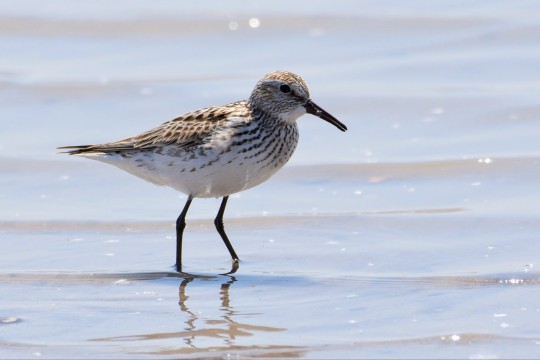
White-rumped Sandpiper from yesterday at Woodbine Beach
65 notes
·
View notes
Note
Do yu know what other animals were in ancient egypt? I want my oc to have a unique animal and you seem to know a fair amount

I am a well of ridiculous, hyperspecific, only interesting to some trivia lmao.
I would encourage you not to limit yourself to an entirely unique beast- many deities share sacred animals and are still strong individuals. My mind immediately goes to the huge number of feline deities- lions and lionesses in particular- for an example. Additionally, it's nigh impossible for me (with no academic anthropology/egyptology/historic zoology knowledge) to say for certain that particular animals were present in Kemet when they have no documented deities, mummies, or written mentions. I've had to guess for some, deduce by their present day habitats and more or less "timeline" of their species.
It's also important to keep in mind Kemet had contact with other civilizations in other habitats, meaning they were aware of animals not necessarily native to the area. A perfect example is the Hamadryas baboon- they were Nubian animals, but were sacred to both Thoth and Babi, depicted in art, and many mummies of the species have been recovered. A more surprising example is the Syrian brown bear, which was a rare exotic spectacle for the royal elite. There's also the trouble of many species now being extant from the area, meaning they were there but the local population is now extinct- the African sacred ibis is the example my mind comes to first, the waterfowl no longer present along the Nile.
Coincidentally, I've been compiling a list of animals for my own reference to supply a beast or two for the deities that don't have one in tradition.

Birds
Abdim's Stork
African Darter
African Dwarf Kingfisher
African Grass Owl
African Open-billed Stork
African Pied Wagtail
African Sacred Ibis
Asian Green Bee-Eater
Barbary Falcon
Barbary Partridge
Barn Owl
Barn Swallow
Bearded Vulture
Bennu Heron (likely not an actual animal, the Bennu bird inspired by the Goliath Heron- but felt like including it anyhow)
Black Kite
Black Stork
Black-throated Loon
Black-winged Kite
Brown-necked Raven
Carrion Crow
Cattle Egret
Chukar Partridge
Common Buzzard
Common Cormorant
Common Crane
Common Greenshank
Common House Martin
Common Kestrel
Common Kingfisher
Common Pochard
Common Quail
Common Raven
Common Redshank
Common Redstart
Common Sandpiper
Common Spoonbill
Common Teal
Crab Plover
Crested Plover
Dalmatian Pelican
Demoiselle Crane
Eagle (I'm sure there were some, but I can't find any definitive evidence of species in the ancient Kemetic culture- I would take a guess that the Golden Eage was an infrequent visitor)
Egyptian Plover
Egyptian Vulture
European Roller (considered a pest)
European Turtle-dove
Eurasian Coot
Eurasian Crag Martin
Eurasian Teal
Eurasian Wigeon
Fan-tailed Raven
Ferruginous Duck
Gadwall
Garganey
Glossy Ibis
Golden Oriole
Goliath Heron
Great Bittern
Great Bustard
Great Cormorant
Great Egret
Great Spotted Cuckoo
Great White Pelican
Greater Flamingo (possibly not native)
Green Sandpiper
Grey Heron
Griffon Vulture
Helmeted Guineafowl (not native)
Hermit Ibis
Hobby Falcon
Honey Buzzard
Hooded Crow
Hoopoe
Houbara Bustard
House Crow
House Sparrow (pest, hieroglyph had negative connotation)
Kittliz's Plover
Lanner Falcon
Lappet-faced Vulture
Laughing Dove
Lesser Kestrel
Lesser Pied Kingfisher
Little Bittern
Little Bustard
Little Egret
Little Owl
Long-eared Owl
Long-legged Buzzard
Mallard
Marabou Stork
Marsh Sandpiper
Masked Shrike
Merlin
Mourning Wheatear
Northern Lapwing
Northern Pintail
Northern Shoveler
Ostrich
Pale Crag Martin
Peregrine Falcon
Pied Avocet
Pink-backed Pelican
Purple Gallinule
Purple Heron
Red Kite
Red-backed Shrike
Red-footed Falcon
Red-rumped Wheatear
Reed Cormorant
Ring-necked Dove
Rock Dove
Rook
Ruddy Shelduck
Saddle-bill Stork
Saker Falcon
Sandhill Crane
Sand Martin
Sand Partridge
Short-eared Owl
Spotted Redshank
Sooty Falcon
Squacco Heron
Striated Heron
Swan (not native)
Tawny Owl
Tufted Duck
Western Reef Heron
White-backed Night Heron
White-crowned Wheatear
White Stork
White Wagtail
Wood Sandpiper
Yellow-billed Stork
Mammals
Aardvark (possibly not native)
Aardwolf
Addax Antelope
African Clawless Otter
African Giant Shrew
African Green Monkey (not native)
African Grass Rat
African Leopard
African Striped Weasel
Arabian Oryx
Barbary Deer (not native)
Barbary Lion (now extinct)
Barbary Macaque (not native)
Black Rat
Common Patas Monkey (not native)
Black Rhinoceros
Blanford's Fox
Black Wildebeest
Bubal Hartebeest (now extinct)
Cairo Spiny Mouse
Cape Hare
Caracal
Cheetah
Common Beisa Oryx
Common Genet
Desert Hedgehog
Desert Long-eared Bat
Dorcas Gazelle
Desert Black Cobra
Egyptian Fruit Bat
Egyptian Jackal/African Wolf (originally misidentified, now the African Wolf)
Egyptian Mongoose
Egyptian Pipistrelle
Egyptian Red Fox
Egyptian Slit-faced Bat
Egyptian Tomb Bat
Egyptian Weasel
Egyptian Wild Ass
Fennec Fox
Flower's Shrew
Four-toed Jerboa
Geoffroy's Horseshoe Bat
Gerenuk
Giraffe
Golden Spiny Mouse
Greater Egyptian Jerboa
Greater Mouse-tailed Bat
Greater Red Musk Shrew
Hamadryas Baboon (not native)
Hippopotamus
Honey Badger
House Mouse
Lesser Egyptian Jerboa
Lesser Mouse-tailed Bat
Long-eared Hedgehog
Long-nosed Shrew
North African/Bush Elephant (vilified and driven out by prehistoric Egyptians)
North African Crested Porcupine (not native)
Nubian Ibex (not native)
Olive Baboon (likely not native, sometimes called the Anubis Baboon)
Persian Fallow Deer (not native)
Rhim Gazelle
Rüppell's Fox
Sand Rat
Serval (likely not native, but Ra was depicted as one)
Scimitar Oryx
Soemmerring's Gazelle
Somali Dwarf Shrew
Spotted Hyena
Spotted-necked Otter
Striped Hyena
Syrian Brown Bear (not native)
Wild Boar
White Rhinoceros
Yellow Baboon (not native, species' epithet means 'dog-head' in Greek)
Vervet Monkey
Reptiles
African Chameleon
African Rock Python
Arabian Horned Viper
Desert Horned Viper
Desert Monitor Lizard
Egyptian Cobra
Egyptian Gecko
Egyptian Sand Boa
Egyptian Sand Racer
Egyptian Tortoise
Javelin Sand Boa
Insects/Arachnids/Etc.
Nile Crocodile
Nile Soft-shelled Turtle
Red Spitting Cobra
Saharan Sand Viper
Amphibians
African Common Toad
European Green Toad
Marsh Frog
Mascarene Grass Frog
Nile Delta Toad
Nile Valley Toad
Camel Spider
Banded Garden Spider
Brown Widow Spider
Carpenter Ant
Centipede
Click Beetle
Common Housefly (NOT considered a pest, actually revered as a protector)
Danaid Eggfly
Desert Ant
Desert Locust
Devil's Coach Horse Beetle
Dorippus Tiger Butterfly
Dragonfly
Flea
Fire Ant
Jewel Beetle
Gaudy Commodore Butterfly
Half-edged Wall Jumping Spider
Large Salmon Arab Butterfly
Maggot/Carrion Fly
Migratory Locust
Messor Ant
Millipede
Red-breasted Goose
Mosquito (pest)
Moths in the Saturniidae family
Palestine Yellow Scorpion
Pantropical Jumping Spider
Pharaoh Ant
Plain Tiger Butterfly
Praying Mantis
Scarab Beetle
Sinai Baton Blue Butterfly
Southern White Admiral Butterfly
Scorpions in the Buthidae and Scorpionidae families
Water Scorpion
Fish, Mollusks, etc. (Keep in mind fish were taboo in Kemet)
Abju
African Catfish
African Tigerfish
Bayad Fish
Blacktip Shark
Blue-spotted Stingray
Bolti
Chromis
Cichlid
Cornish Jack
Eel
Flatfish
Gilt-head Bream
Great Barracuda
Leopard Shark
Lepidotus Fish
Loligo Squid
Lungfish
Moon Fish
Mullet
Nile Barb
Nile Bichir
Nile Carp
Nile Mormyrid
Nile Labeo
Nile Perch
Nile Puffer
Parrotfish
Reef Manta Ray
Reef Shark
Sandbar Shark
Sea Snake
Scorpionfish
Spiny Lobster
Sturgeon
Surgeonfish
Swordfish
Thornback Ray
Thresher Shark
Tiger Shark
Tilapia
Triggerfish
Unicorn Fish
Wrasse
Zebra Shark
Domestic Animals
Bean Goose
Brant Goose
Camel (not introduced until Middle/New Kingdom)
Cats (Mau breed)
Chickens (not introduced until New Kingdom era)
Cow/Bull
Dogs (Saluki, Greyhound, Basenji, and Pharaoh Hound breeds)
Donkey
Egyptian Goose
Greater White-fronted Goose
Greylag Goose
Honey Bees
Horse (not introduced until New Kingdom)
Pig
Ram
My sources, if you're interested, are the Wikipedia page for Egyptian wildlife, a few different diving sites about the Mediterranean and Red Sea, a couple books I own on Ancient Egypt that describe the geography of the periods, and this lovely reddit multi-post
Sheep
13 notes
·
View notes
Text

Baird’s Sandpiper (upper left); Least Sandpiper (lower left with pale coloured feet); Dunlin (middle; breeding plumage in front, winter behind); White-rumped Sandpiper. Brooks painted these decades before the current plethora of field guides were published showing in great detail what these birds look like, not to mention thousands of photographs of them from all angles…so he did not necessarily make them quite as accurate as is possible in the current era, eighty plus years later, but I find the painting itself, and all his shorebirds esthetically pleasing.
art by major allan brooks
text by barry kent mackay
support barry kent mackay on ko-fi
2 notes
·
View notes
Video
Baird or White-Rumped Sandpiper . by Kip Hutchison
Via Flickr:
This Sandpiper kicked out all the Western Sandpiper out of the way whilst feeding .
3 notes
·
View notes
Text
my 100 birds journey
All species of birds I’ve seen or heard this year:
Gaaviforms:
common loon
Anatidae:
Snow goose
Canada goose
Mallard duck
American black duck
Blue-winged teal
Wood duck
Hooded merganser
Common merganser
Phasianidae:
Ruffed grouse
Spruce grouse
Phalacrocoracidae:
Double-crested cormorant
Ardeidae:
Great blue heron
Cathartidae:
Turkey vulture
Accipitridae:
Bald eagle
Cooper’s hawk
Red-tailed hawk
Northern harrier (probable)
Falconidae:
Merlin
Peregrine falcon
Charadriidae:
Kildeer (heard only)
Scolopacidae:
Spotted sandpiper
Solitary sandpiper
Laridae:
Ring-billed gull
Herring gull
Columbidae:
Rock dove (pigeon)
Mourning dove
Trochilidae:
Ruby-throated hummingbird
Alcedinidae:
Belted kingfisher
Picidae:
Yellow-bellied sapsucker
Downy woodpecker
Hairy woodpecker
Northern flicker (golden form)
Pileated woodpecker
Passeriforms:
Tyrannidae:
Eastern wood-peewee
Alder flycatcher
Least flycatcher
Eastern phoebe
Great crested flycatcher (heard only)
Vireonidae:
Red-eyed vireo
Solitary vireo
Warbling vireo
Corvidae:
Blue jay
American crow
Common raven
Hirundinidae:
Purple martin
Tree swallow
Cliff swallow
Paridae:
Black-capped chickadee (hand-fed!!)
Sittidae:
Red-breasted nuthatch
White-breasted nuthatch
Certhiidae:
Brown tree-creeper
Troglodytidae:
House wren
Winter wren
Regulidae:
Ruby-crowned kinglet
Turdidae:
Veery
Swainson’s thrush
Hermit thrush
Wood thrush
American robin
Mimidae:
Gray catbird
Northern mockingbird
Sturnidae:
European starling
Motacillidae:
American pipit (possible, heard only)
Bombycillidae:
Cedar waxwing
Parulidae:
Tenessee warbler
Nashville warbler
Northern parula
Yellow warbler
Chestnut-sided warbler
Magnolia warbler
Cape May warbler
Black-throated blue warbler
Yellow-rumped warbler
Black-throated green warbler
Blackburnian warbler
Pine warbler
Black and white warbler
American redstart
Ovenbird
Northern waterthrush
Common yellowthroat
Canada warbler
Emberizidae:
Chipping sparrow
White-throated sparrow
White-crowned sparrow
Dark-eyed junco (slate-colored)
Song sparrow
Lincoln’s sparrow (probable)
Swamp sparrow
Savannah sparrow
Cardinalidae:
Northern cardinal
Rose-breasted grosbeak
Icteridae:
Bobolink
Red-winged blackbird
Common grackle
Fringilidae:
Purple finch
House finch
American goldfinch
Passeridae:
House sparrow
3 notes
·
View notes
Photo

White-rumped and Semipalmated sandpipers at the Guzzle,
Richard Stern
3 notes
·
View notes
Text
20th Mumbai Bird Race 2024 (HSBC India BirdRaces)
Sunday Feb 18, 2024 from 7:38 am to 6 pm, traveling 13.87 km for 626 minutes.
Places birdwatched at: Lokhandwala lake > Lokhandwala nalla > Malad InOrbit Creek Road > IIT Powai lake & campus.
Morning was cool and then very hot. We retired home for lunch and then resumed again. Lunch break was from 12 o'clock noon to 3:30 pm.

Number of bird species seen/ heard: 56.
25 Lesser Whistling-Duck
1 Gadwall
50 Indian Spot-billed Duck
2 Green-winged Teal
10 Greater Flamingo
5 Lesser Flamingo
1 Little Grebe
1 Rock Pigeon (Feral Pigeon)
2 Greater Coucal
2 Asian Palm Swift
5 Eurasian Moorhen
5 Eurasian Coot
9 Gray-headed Swamphen
2 White-breasted Waterhen -- Seen
3 Black-winged Stilt
1 Red-wattled Lapwing
3 Bronze-winged Jacana
1 Black-tailed Godwit
1 Common Sandpiper
4 Wood Sandpiper
1 Common Redshank
1 Black-headed Gull
1 Brown-headed Gull
1 Common Tern
1 Little Cormorant
1 Little Egret
1 Indian Pond-Heron
1 Great Egret
1 Medium Egret
1 Purple Heron
1 Glossy Ibis
1 Black-headed Ibis
1 Western Marsh Harrier
5 Black Kite
1 White-throated Kingfisher
5 Asian Green Bee-eater
1 Coppersmith Barbet -- Heard
2 Brown-headed Barbet
2 Rose-ringed Parakeet
1 Spot-breasted Fantail
1 Black Drongo
1 Ashy Drongo
1 Long-tailed Shrike
100 House Crow
2 Large-billed Crow
1 Common Tailorbird -- Heard
2 Ashy Prinia
1 Booted Warbler -- Heard
1 Blyth's Reed Warbler
2 Red-vented Bulbul
2 Jungle Babbler
5 Rosy Starling
5 Common Myna
1 Oriental Magpie-Robin
1 Purple-rumped Sunbird
25 House Sparrow

Sunrise.

Lokhandwala lake
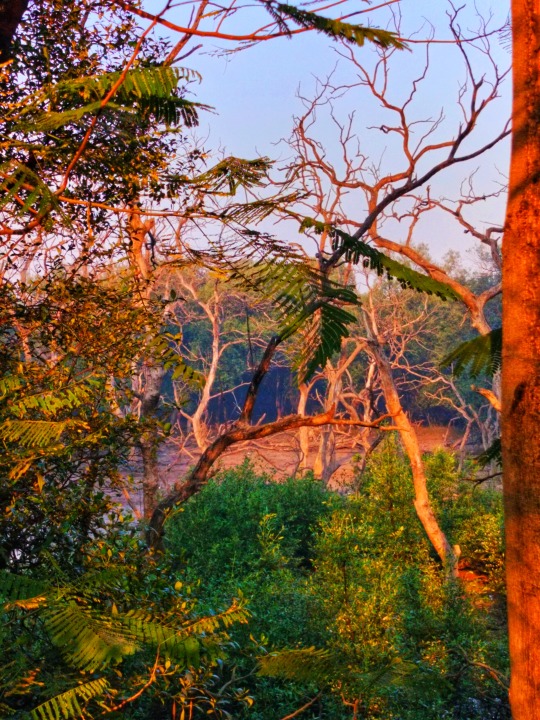

IIT Powai Campus
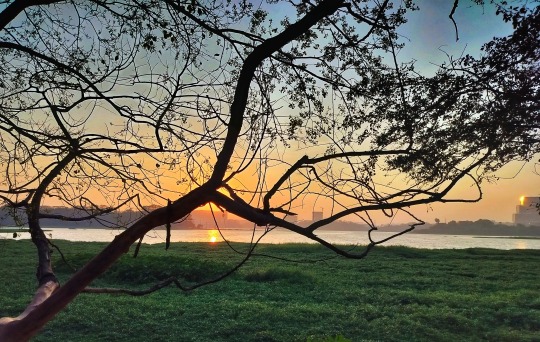
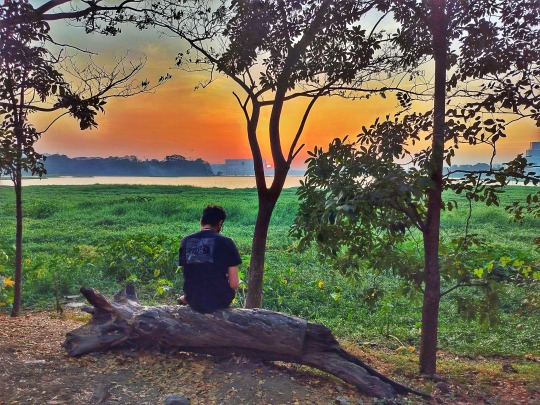

Here are few photos from the bird race clicked by my good friend, JN.



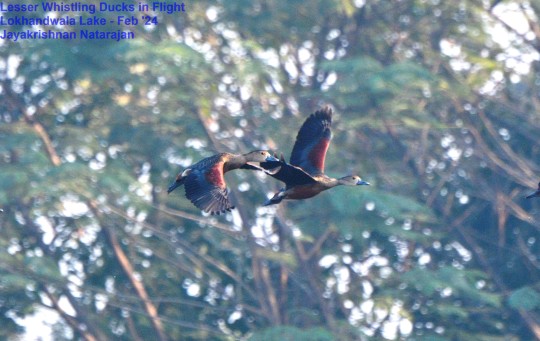


How did I capture a TIME LAPSE of the Sunset at Powai Lake?
There was a small mound of mud over which a branch of tree had fallen. I balanced my mobile properly for the entire duration of the setting sequence. My friend's son, SSN and other people walking in front of the mobile were politely asked to walk carefully from behind the mobile and over the branch. They complied and even thanked me for offering them the unnecessary hand over the small branch, on which I had balanced my mobile really well.
All went well and then when I went to show my group, the result of my endevour, I realised I had not pressed the start button to click the mobile camera.
Our hosts, the organizers of the India Bird Races, Mr. Ravi & Mr. Sunjoy as usual were gracious and kind and conducted bird quizzes with panache, that kept everyone on the edge to win prizes and gain knowledge.
You can check the earlier editions of the India Bird Races below:
2023 Mumbai Bird Race - 53 species seen.
2022 Mumbai Bird Race - 50 species seen.
2019 Mumbai Bird Race - 63 species seen.
2015 Mumbai Bird Race - 90 species seen.
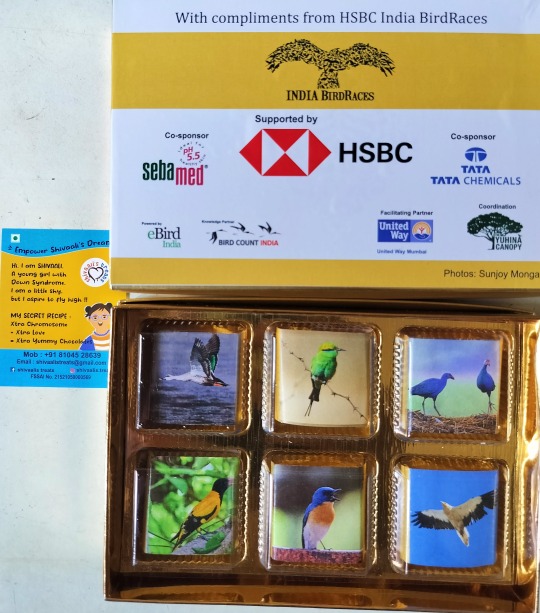
The pan flavoured chocolate in this gift box was something new.
I look forward to many more bird races and abundance of birds in and around Mumbai.
0 notes
Text
Day 281
May 11, 2023

We brought the rest of our stuff out to the van at around 6:30, then sat around and waited for the team leaders to finish the room inspections and have a meeting. We finally left at 8:00.

We passed by Clear Lake and continued into the mountains. This area of California contains the fairly unique chaparral biome. This is a fire-prone shrubby biome with mild, wet winters and hot, dry summers.
We continued north through this forest:

We stopped at Glass Beach:
Glass Beach is a beach adjacent to MacKerricher State Park near Fort Bragg, California, named from a time when it was abundant with sea glass created from years of dumping garbage into an area of coastline near the northern part of the town.



Here I saw six new species of birds. There were Brewer’s blackbirds mobbing the ravens closest to the van. We figured that they’re nesting nearby.
Many of the common gull species in this area are difficult to differentiate, but I was able to get photos that were good enough to ID a couple of them as western gulls. I’m mainly going off of eye, leg, wingtip color. Presence of a gonydeal spot on the lower beak can also narrow it down.
I walked closer to the ocean and spotted a pair of black oystercatchers on one of the larger rocks in the water.
There was also a pigeon guillemot near them. This is the first time I’ve seen an auk. These small seabirds are reminiscent of penguins, though they can fly. For some reason, a lot of fish-eating birds seem to have high contrast black-and-white plumage.
A pair of wandering tattlers were nearby before flying down the beach to a smaller rock in the ocean.
Finally, I saw a pelagic cormorant flying low across the water. These look similar to the double-crested cormorants that I’m familiar with, though they aren’t found inland and have large white rump patches while in breeding plumage.
It became increasingly foggier as we drove up the coast. By the time we entered the forest and stopped at Prairie Creek Redwoods State Park, we couldn’t see the sky at all.
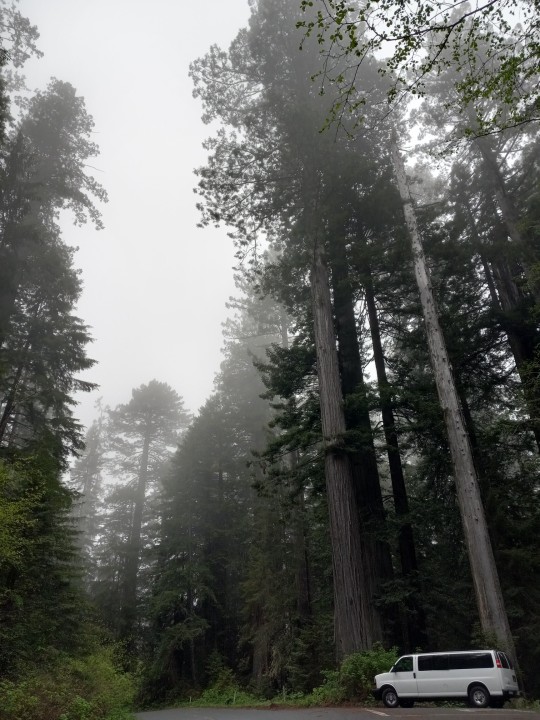


Here I spotted a chestnut-backed chickadee. There was hardly any bird activity otherwise.
We departed and saw some elk! A teammate took this photo for me:
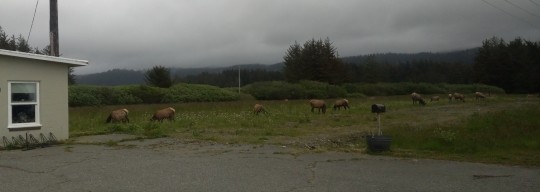
We eventually stopped for dinner with the other team, crossed into Oregon, and completed the drive to the hotel. We arrived a while after sunset.
0 notes
Text
Back Home
A lot of birds arrived during our trip to North Carolina. On the first morning back, I had a wonderful outing.
My first Vermont Gray Catbird of the year
This Mallard was spectacular in the morning sun
A Solitary Sandpiper
A Red Trillium along the trail
Many birds were singing including warblers (Yellow, Black & White, Chestnut-sided, Yellow-rumped, and Common Yellowthroat) and at the end of…

View On WordPress
#American Robin#county bird#Gray Catbird#Mallard#migration#Solitary Sandpiper#Vermont Birding#Washington County
0 notes
Photo
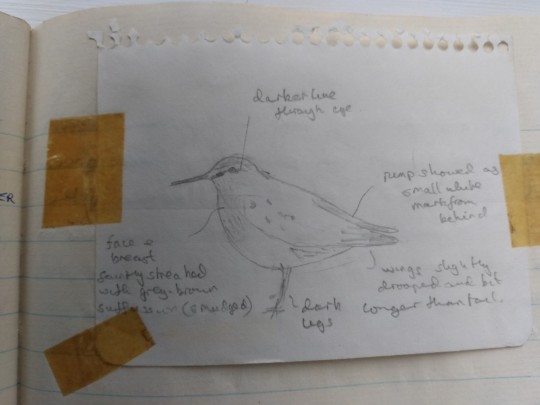
White-rumped Sandpiper (Calidris fuscicollis)
© John Lewis
3 notes
·
View notes
Photo

March 11, 2020 - White-rumped Sandpiper (Calidris fuscicollis)
Breeding in arctic Canada, these sandpipers migrate through the eastern United States, parts of Central America, the Caribbean, and much of South America to winter in southeastern South America. They eat mostly invertebrates, such as midges, flies, beetles, bloodworms, and marine worms, along with some seeds. During the breeding season males defend nesting territories. Females build nests in depressions on the ground from grasses, sedges, willow leaves, moss, and lichen. Once the females have laid their eggs, the males depart, leaving them to incubate the eggs and care for the chicks alone.
65 notes
·
View notes
Photo

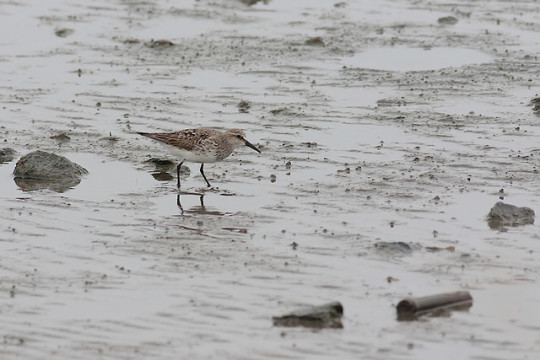

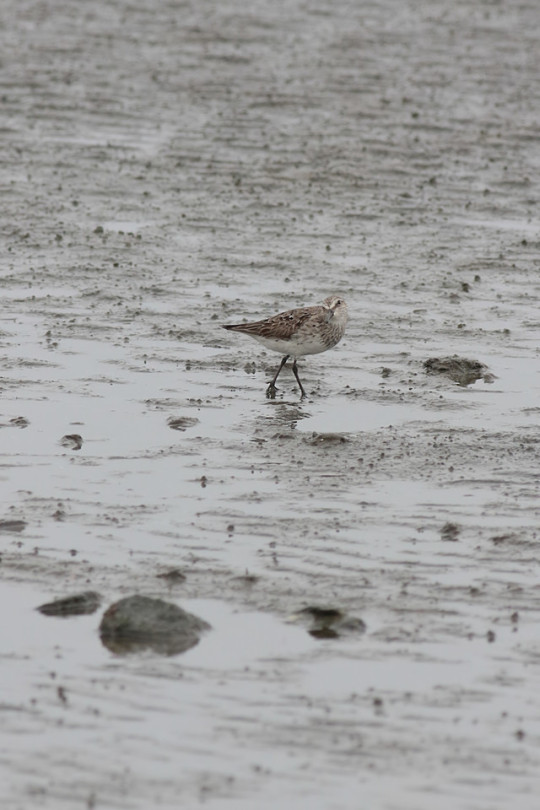

Calidris fuscicollis [コシジロウズラシギ,White-rumped Sandpiper]
比較的近くを、右へ左へ。
朝から待っていた甲斐がありましたヽ(*^^*)ノ
ブルブルしたり翼を高く上げてストレッチしたり。
また会えるといいなぁ~。
8月中旬撮影
#photographers on tumblr#Calidris fuscicollis#コシジロウズラシギ#White-rumped Sandpiper#Birds#Bird#野鳥#鳥#Japan#birdwatching
37 notes
·
View notes
